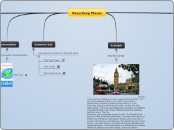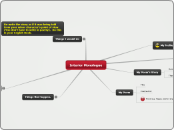ACTIVITIES
JOURNAL WRITING
Student's may have the
perception that their
writing may not be important
because it is not being collected.
Use of white board
for journal writing.
Not able to monitor
progress.
Students monitor each other
pair-share
I am able to walk around
and monitor student's thoughts.
Ask questions
or push thinking by
commenting on their writing.
Consistent
During APK
CHANGE
AND
IMPROVE
Should I separate the
close reading portion from
the rest of the reading packet?
Do I really want them
to have for hand outs?
Vocabulary
Some students may
not know words from
Tier 2.
Make sure to have
vocabulary from tier
2 and 3 as part of the
close reading.
Have students use close reading
and model it for the rest of the
class.
I will be more consistent.
A full lesson on a close reading activity
TECHNOLOGY
Helps with pacing
of class.
I am aware of the time.
Use of PowerPoint
Helpful for students
that benefit from
visuals.
Visuals for ELLs and
students with IEPs
consistent
Some websites are restricted.
Need to have IT fix
problems, and sometimes they
are not on campus.
VOCABULARY
Tier 3 is mentioned
but not in depth. The
responsibility falls on the students.
Translation
Translations help ELLs
Rewording or Rephrasing
Better understanding for students.
There is no word wall
No visuals for ELLs to
reference around the
classroom.
CLOSE READING
UNSUCCESSFUL
Never enough time.
It has not been the main lesson,
and therefore has not been properly
implemented or taught.
I have not used this strategy consistently.
Unsuccessful because it has been used
as modeling technique instead
of using this strategy as
a way of teaching new skills
or modeling metacognition.
SUCCESSFUL
It helps English
Language Learners
access the content.
Helps students with
pronounciation
ELLs are more willing to
work because
one barrier is no
longer in the way.
Subtopic
ELLs who have difficulty
reading are now able to
interact with the content.
Helps students
with pronunciation.
Helps students with pronounciation
Using close reading
during difficult passages
has helped students
understand the content.
Students are able
develop critical questions
regarding the readings.









